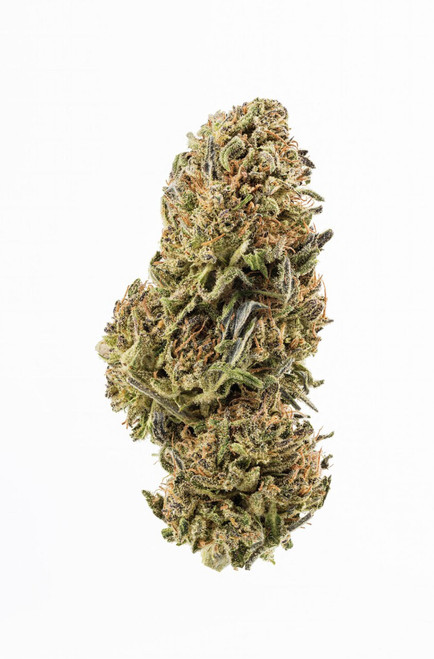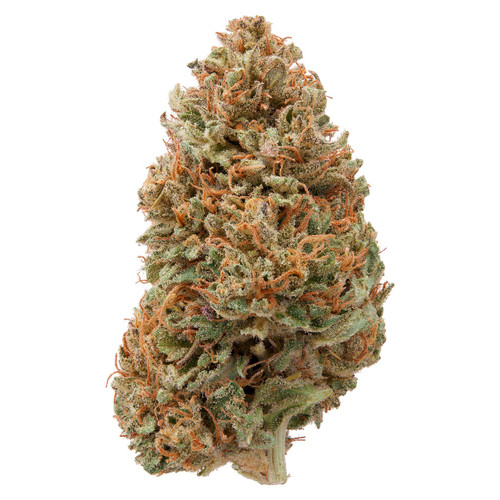The cannabis terpene beta-caryophyllene is very unique because it can bind to the CB2 endocannabinoid receptor like a cannabinoid (THC, CBD, CBG, CBN, etc.). It is one of the big reasons people are encouraged to look beyond cannabinoid potency and consider a strain for its terpene profile as well. Cannabinoids can work together with terpenes like beta-caryophyllene, but CBD terpenes also have beneficial properties of their own. The benefits of beta-caryophyllene are similar to CBD benefits because both activate CB2 endocannabinoid receptors in the human body. So how does beta-caryophyllene work and what is it?
[Beta-caryophyllene] was one of the first cannabis-derived compounds with a fundamentally different structure from the classical cannabinoids that interact with the endocannabinoid system in humans. β-Caryophyllene is known to selectively bind to the CB2 receptor; therefore, it is sometimes also classed as an atypical cannabinoid.
From “Cannabis sativa and Hemp'
Table of Contents
Beta-Caryophyllene Terpene Overview
- Beta-caryophyllene is a very common plant terpene
- Binds directly to endocannabinoid receptor CB2 (CBD only binds weakly to CB2)
- Structurally much different than a cannabinoid despite similar binding properties
- Peppery and spicy flavor
- FDA approved food additive that has demonstrated therapeutic benefits (not true of CBD)
- Naturally produced by many plants
What is Beta-Caryophyllene?
Bata-caryophyllene is a terpene that is found in cannabis and many other plants. This terpene has a spicy and peppery flavor. Outside of cannabis, you can find beta-caryophyllene in black pepper, cloves, cinnamon, rosemary, and basil and hops [2]. Beta-caryophyllene is a very unique terpene because it is the first known terpene to bind directly to receptors in the endocannabinoid system.
Normally, only cannabinoids like THC, CBD, CBG, and CBN can do this and even those true cannabinoids often work indirectly on the endocannabinoid system vs binding directly to receptors. Because of this, beta-caryophyllene is much more like a cannabinoid than other CBD terpenes. Unlike cannabinoids, beta-caryophyllene is approved by the FDA for use in food, making it ideal for use in supplements and clearly safe and legal.
Beta-Caryophyllene has the distinction of being the first known “dietary cannabinoid,” a common component of food that has GRAS (Generally Recognized as Safe) status and is approved by the FDA for food use.
From “Cannabis sativa and Hemp”
Plants Containing Beta-Caryophyllene
 The beta-caryophyllene molecule
The beta-caryophyllene molecule- Cannabis (marijuana and hemp)
- Black caraway
- Cloves
- Hops
- Basil
- Oregano
- Black pepper
- Lavender
- Rosemary
- True cinnamon (Cinnamomum zeylanicum)
- Malabathrum (Cinnamomum tamala)
- Ylang-ylang
- Copaiba oil
Beta-Caryophyllene vs Alpha-Caryophyllene
Caryophyllene is the general name for the different types of caryophyllene molecules. Along with beta-caryophyllene, there is also alpha-caryophyllene and other variations that have slightly different chemistry. When it comes to alpha-caryophyllene, that name is actually obsolete. It is most commonly called alpha-humulene, a name you may be more familiar with. Beta-caryophyllene is usually found in plant extracts as a mixture with isocaryophyllene and α-humulene.
Humulene, also known as α-caryophyllene, is a ring-opened isomer of β-caryophyllene, which is notably lacking in CB2 activity.
From “Cannabis sativa and Hemp”
Beta-Caryophyllene Benefits
CB2 is a target for the treatment of inflammation, pain, atherosclerosis, and osteoporosis, so researchers are very interested in the idea of a GRAS-approved substance that is orally bioavailable and can work on that endocannabinoid system receptor. Beta-caryophyllene has been shown in research to be directly beneficial for colitis, osteoarthritis, diabetes, cerebral ischemia, anxiety and depression, liver fibrosis, and Alzheimer-like disease types [1, 2]. When it comes to beta-caryophyllene for cancer, it has shown synergy with the chemotherapy drug Paclitaxel on human tumor cell lines in cancer studies. It is also thought to stimulate apoptosis and suppresses tumor growth.
Although the CB1 receptor is responsible for the psychomodulatory effects, activation of the CB2 receptor is a potential therapeutic strategy for the treatment of inflammation, pain, atherosclerosis, and osteoporosis.
From “Beta-caryophyllene is a dietary cannabinoid”
In a roundworm model, beta-caryophyllene modulated stress-related genes and extended the lifespan of the organism [4]. This study is of interest to researchers because it shows that genes that regulate oxidative stress, xenobiotic detoxification, and longevity can be modulated using beta-caryophyllene.
Beta-Caryophyllene for Pain and Inflammation
CB2 is critically involved in the body’s response to inflammation and neuropathic pain. A study by Klauke, et al. demonstrated that orally administered beta-caryophyllene reduced lat phase inflammatory pain responses in a CB2 receptor-dependent manner. However, the researcher notes that beta-caryophyllene had no effect on acute (early phase) pain responses. Based on these observations, the research team believes that taking beta-caryophyllene regularly could be a very good option for treating some types of chronic pain.
Beta-caryophyllene (BCP) is a natural bicyclic sesquiterpene and is a FDA approved food additive, found as an active ingredient in essential oils of numerous edible plants. It possesses a wide range of biological activities including anti-oxidant, anti-inflammatory, anti-cancerous and local anesthetic actions.
From “Beta-caryophyllene modulates expression of stress response genes and mediates longevity in Caenorhabditis elegans”
Beta-Caryophyllene Strains
Here are the beta-caryophyllene strains available from Plain Jane. Please note that we do not have terpene data for all strains, so there are the ones that are confirmed by lab tests to contain the terpene.
- CBG
- Lifter
- Sour Space Candy
- Elektra
- Special Sauce
- Suver Haze
- Hawaiian Haze
- Rogue
- Golden Cherry (out of stock with Plain Jane)

Lifter Hemp Flower by Plain Jane
Suver Haze Hemp Flower by Plain Jane
Hawaiian Haze Hemp Flower by Plain Jane
Final Thoughts on Beta-Caryophyllene
The more you learn about terpenes like beta-caryophyllene, the more you will surely appreciate the cannabis flower for more than its potency. There is a lot of research that is showing that more potent strains of CBD or THC do not necessarily result in stronger effects. This “dose-dependant” effect model is true in some cases, but cannabinoids and CBD terpenes have a complex relationship in the body and are suspected of exerting a stronger “entourage effect” at mid-level doses. When you are thinking about what strains to buy, consider trying some less potent strains, and look at the terpene profiles of the strains that you like best. This information will truly guide you better than the misused terms like indica and sativa.
References
- Gertsch, J., Leonti, M., Raduner, S., Racz, I., Chen, J. Z., Xie, X. Q., … & Zimmer, A. (2008). Beta-caryophyllene is a dietary cannabinoid. Proceedings of the National Academy of Sciences, 105(26), 9099-9104.
- Hartsel, J. A., Eades, J., Hickory, B., & Makriyannis, A. (2016). Cannabis sativa and Hemp. In Nutraceuticals (pp. 735-754). Academic Press.
- Klauke, A. L., Racz, I., Pradier, B., Markert, A., Zimmer, A. M., Gertsch, J., & Zimmer, A. (2014). The cannabinoid CB2 receptor-selective phytocannabinoid beta-caryophyllene exerts analgesic effects in mouse models of inflammatory and neuropathic pain. European Neuropsychopharmacology, 24(4), 608-620.
- Pant, A., Saikia, S. K., Shukla, V., Asthana, J., Akhoon, B. A., & Pandey, R. (2014). Beta-caryophyllene modulates expression of stress response genes and mediates longevity in Caenorhabditis elegans. Experimental Gerontology, 57, 81-95.


